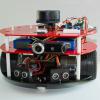After many years of lurking (and some drooling), I think it is about time that I get my hands dirty with something simple and actually useful in this space. But I can see that so much has happened since I was last looking into this a few years ago, and it seems picking the right hardware is a bit of a jungle, so I really would appreciate some help with that to get the first project off the ground.
My first project will be a simple logger of temperature and humidity. Something along the lines of:
- Every 10 minutes, read temperature and humidity
- Send it to a URL I config (http://heat.mydomain...=35&humidity=61)
Version 1:
- Ethernet and battery (I understand this is the simplest (or at least used to be))
Version 2:
- Wifi and battery
Version 3:
- Wifi and outlet power (230v)
Requirements:
- .Net code
- 100$/� budget
Priorities:
1. I want to get an easy win under my belt with as little hassle as possible.
2. Cost is less important, I don't want to save money and have to spend more time fiddling with drivers etc
The question:
Which specific devices should I buy to achieve this in the easiest way possible?















